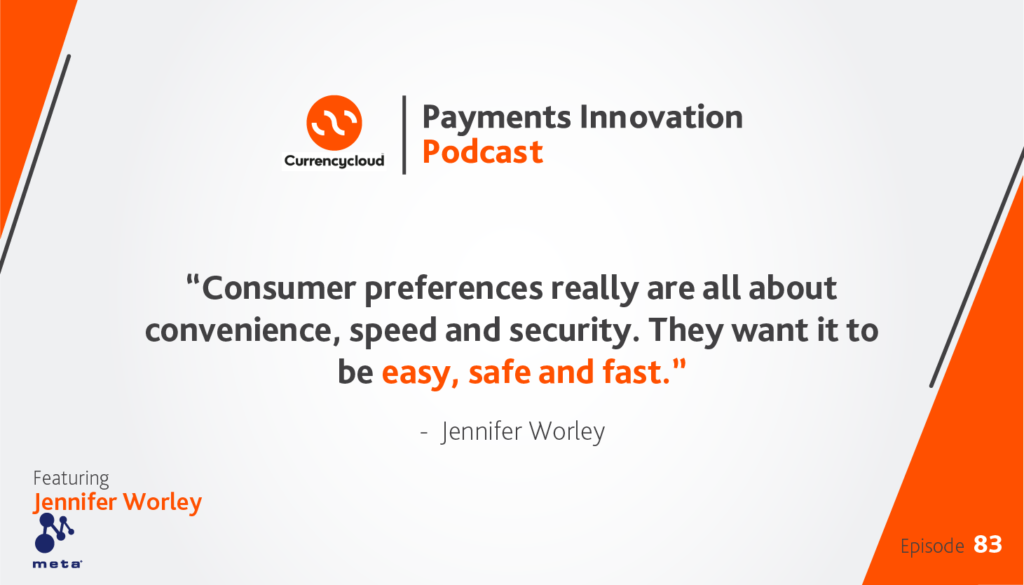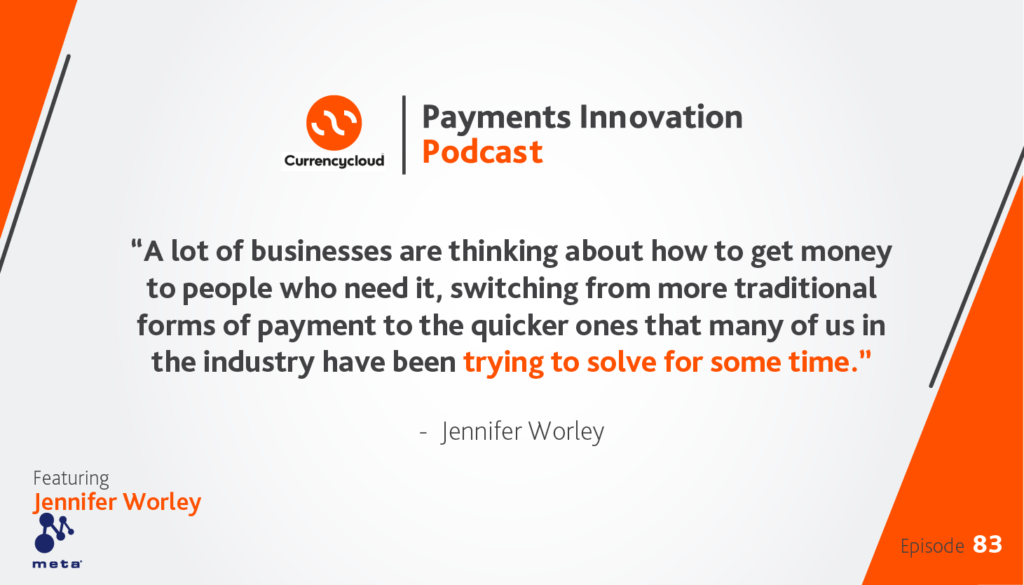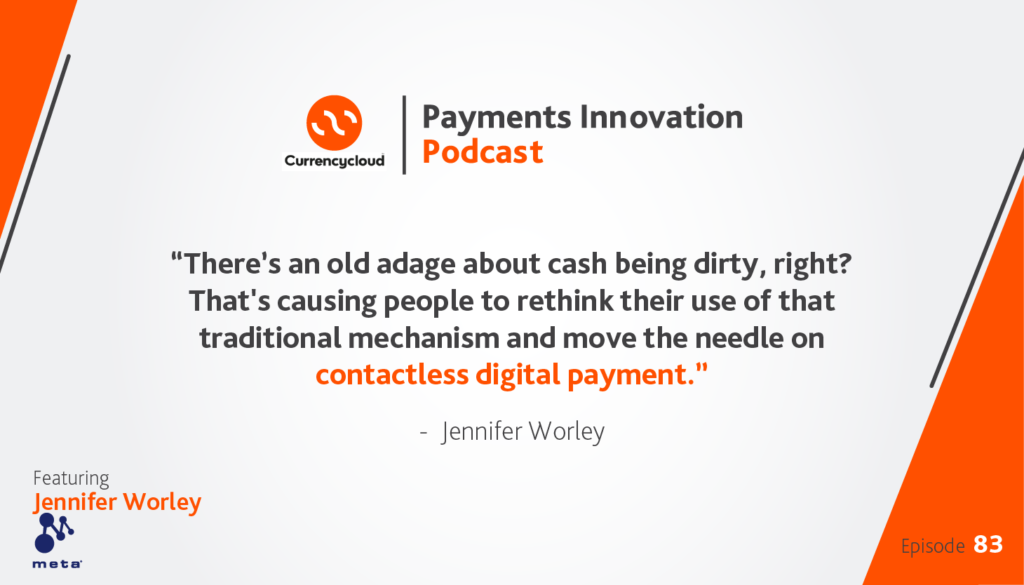Do you ever think about the journey your $20 bill took to find itself in your wallet?
The places it’s been. The things it purchased. The hands it passed through…
Well, I guess we’re all thinking about that last one now — and that’s driving the growth in contactless payments.
But that’s just one of the ways COVID-19 is ratcheting up existing financial trends.
That’s why we invited Jennifer Worley, SVP Product & Marketing at Meta Payment Systems, on the show today. She’s been studying the payments trends surrounding the COVID-19 crisis and came on to share what she has learned.
Jennifer explained:
- How social distancing has renewed the urgency for contactless payments
- Why traditional distribution models don’t work under in today’s crisis
- Why businesses are rethinking how to get cash to people who need it
Contactless payments prove their worth
Paper money — which has been slowly declining in usage for years and, let’s face it, has never had a reputation for being clean — has gone from perhaps less-efficient than digital payments to something that’s downright hazardous for your health.
This is one of the obvious visual reminders of how the pandemic is accelerating trends in the financial ecosystem.
But it’s going even further than that. The people who were resistant to changing their habits before now have no choice but to adopt technology to solve the challenges our current world poses.
And now they’re getting used to it.
The value has been there when it comes to digital payments technology, but not everyone knew it was there. What the pandemic has really done above all else is ramp up the awareness of this value — and it’s unlikely that we’ll be rolling it back once the virus has passed.
This doesn’t just apply to consumers either. Larger companies that have maintained traditional approaches to finances have had to rapidly adjust to the new normal of COVID-19.
Social-digitizing in the wake of the coronavirus
For many companies, there has been pressure to digitally transform for years.
Just… not enough pressure for the whole industry to move on it.
Some companies were content to continue dealing with latency and friction in the traditional payments ecosystem. Or, at the very least, didn’t have a sense of urgency to evolve.
Now, the move to digital can’t be put off any longer— it’s vital for survival.
Just like the stigma the virus placed on traditional currency, traditional brick-and-mortar financial institutions have moved from the norm to an anachronistic holdover from simpler times in a matter of months.
But, again, this is the direction the industry was inevitably heading well before anyone even really considered the spread of some novel disease.
Truth be told, everybody was getting tired of the latency of using paper to move money.

And, in the end, digital saves money. The costs of checks add up — not just producing them, but mailing them, account managing when something goes wrong in the process and resolution costs.
Digital is a clear winner for your bottom line, regardless of whether we are in a global crisis.
And that’s before you even get to the speed of transactions.
In a crisis, speed saves
Over the past few years, the gold rush on alternative payments has really centered on speed — both in the B2B space and the consumer arena.
But this is another trend that has been injected with COVID-19 steroids.
For the consumer, the research Jennifer has done shows that consumer loyalty is largely predicated on the ease with which they get paid. Friction drives the consumer away.
In our current climate, reducing this friction becomes even more important. Think about consumer claims like insurance — in a pandemic, these things matter. Speed saves.
And as much of the workforce transitions to the gig-economy amidst record job loss, being able to leverage digital payments is more important than ever. These workers work on demand, they should get paid on demand.
Jennifer’s research supports this, too. Over 70% of gig workers would be willing to leave their employer if they are not satisfied with how they are being paid.
On the business side of things, companies are moving into digital disbursements to alleviate the time and resources required to pay and remove some of the hefty costs out of the model.

If this crisis has taught us anything, it’s that the companies who were ahead of the curve were the ones who were most prepared to tackle the challenges of a socially-distanced world.
Can you afford to put off change any longer?
To ensure that you never miss an episode of Payments Innovation, subscribe on Apple Podcasts, or Spotify, or here.
Until next time!


